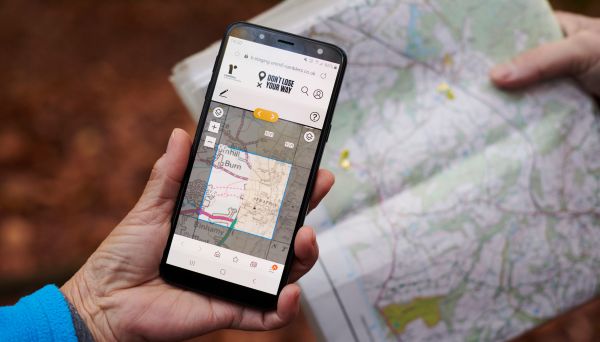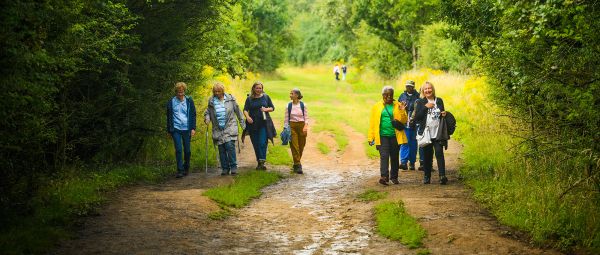Working to save lost paths
Janet talks about her passion for access to the countryside and her fight to save lost paths

Joining the Ramblers
I became a member in the 1980’s at the urging of my brother. I hadn’t thought it was for me because I wasn’t interested in group walks. Then in 1990 I moved with my husband to East Anglia and from the start we walked in every direction to get to know the local villages and the countryside. We saw that paths had become neglected and many were unusable.
I had always been passionate about access to the countryside but had not been actively involved before. It was at this point that I realised that Ramblers were the experts on Rights of Way (RoW) issues and were an excellent resource for anyone needing to understand the law. I soon found that they were invariably helpful and encouraging. The first thing I did was to get an invisible footpath signed and cleared. It crossed a field diagonally and had originally followed the hedge line. It had clearly been a path established by farm labourers on their way to and from work. I discovered that the hedge had been grubbed out and the path ploughed at the beginning of WW2.
This was legal under wartime regulations but farmers were obliged to reinstate such paths when hostilities ended. For 50 years, however, this path had not been available and had almost been forgotten. Getting it restored was fairly straightforward because it was a numbered path and appeared on the Definitive Map. Soon after this I was talking to an elderly neighbour who was a retired farm worker and discovered that there used to be a 1 km long footpath close to the parish boundary: it had run beside the cottage he lived in as a boy. Apparently in those days (100 + years ago now ) some of the local gentry had even driven along it in their carriage on their way to church - and yet it was now completely invisible.
Creating a plan of action
I talked to as many elderly villagers as I could and went to examine the archives. I discovered that the path had appeared on old O.S. Maps and had even had a number but it had unaccountably been left off subsequent maps , although never legally extinguished. I then set about applying to the local Council to have it reinstated. It was a laborious business in pre-computer days to assemble the evidence and get it typed. To my astonishment, despite the evidence which included the witness statements of many locals, the Council refused my application and I was obliged to take the appeal to a higher level.
Eventually there was a finding in our favour and the path was at last reinstated. This all happened about 20 years ago. The Council insisted on giving the path a new number and also on making it 1.5 metres wide instead of standard width. I could not possibly have got this path reinstated without the witness statements of elderly villagers or the advice and support of Eugene Suggett and colleagues at Ramblers. None of my witnesses are alive now and if application had not been made when it was, the path would have been permanently lost. Another concern has been an important all-weather path linking the village with shops and services.
Where conflict could potentially arise (motorised vehicles, bicycles) it has been vital to understand the legal position and once again Ramblers have concisely explained it. A recent threat has been electric scooters, which can move fast and would be dangerous to walkers. Ramblers (Sophie Reindorp) set out the legal position - that it is a criminal offence to ride such a scooter on a public footpath- and I was able to make the Parish Council aware. Recently there has been the threat of a solar farm very close to the village and to footpaths. I spoke to Volunteer Officer Helen Bates, who was extremely helpful. She explained that Ramblers are Statutory Consultees where changes to RoW are concerned. I was able to pass this on to the person in the village who is leading in this matter.

Don’t Lose Your Way – Saving lost paths
We have searched England and Wales and found over 49,000 miles of paths that could be lost forever. Time is running out to save them for future generations.

Saving lost paths
The Ramblers Don’t Lose Your Way project identified over 49,000 miles of potential lost paths but what’s involved with saving a lost path?

Expand the freedom to roam
Help us to expand the freedom to roam. It is one of the biggest things we can do to increase access to the outdoors for everyone.